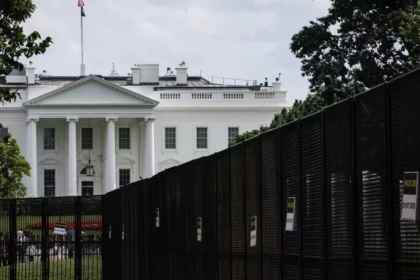A National Tragedy Unfolds
India is grappling with one of the worst aviation disasters in its history after an Air India flight tragically crashed, resulting in the deaths of at least 270 people. The flight, which was carrying passengers and crew from Dubai to Kochi via Mumbai, went down during its final approach under adverse weather conditions. The incident has plunged the nation into mourning and triggered widespread calls for a thorough investigation into aviation safety standards and emergency response preparedness.
The Crash: What Happened?
According to the Directorate General of Civil Aviation (DGCA), the ill-fated aircraft—a wide-bodied Boeing 777—attempted to land at Kochi International Airport amid torrential rain and poor visibility. Witnesses described a terrifying sequence of events: the aircraft made a hard landing, veered off the runway, and broke apart upon impact.
The exact cause of the crash is yet to be determined, but initial reports suggest that hydroplaning on the wet runway may have contributed to the loss of control. It is also believed that the pilot attempted a go-around after the initial descent was deemed too unstable, but engine complications prevented the maneuver from being executed successfully.
The impact split the fuselage into several parts, and much of the wreckage was scattered across the perimeter of the airport. Emergency services rushed to the site within minutes, but many of the passengers had already succumbed to their injuries.
Rising Death Toll and Rescue Operations
As of the latest official statement from the Indian Ministry of Civil Aviation, 270 individuals have been confirmed dead. This includes passengers, crew members, and two infants. Over 30 others remain in critical condition, receiving treatment in local hospitals across Kochi and neighboring districts.
Rescue operations were hampered by poor weather and the hazardous nature of the crash site. Debris, spilled aviation fuel, and the instability of the aircraft’s broken structure posed significant challenges for emergency teams. Nevertheless, responders worked through the night to retrieve bodies, evacuate survivors, and secure the area for investigators.
Medical teams have been dispatched from neighboring states to support overwhelmed local hospitals, while grief counselors have been assigned to assist families of the victims.
Victims and Their Stories
The flight carried a mix of Indian nationals returning home, expatriate workers, students, and families traveling for the summer holidays. Among the deceased are several young children, a renowned academic returning from a conference, and an Air India flight attendant known for her long years of service.
One survivor, 27-year-old Fawzia Rahman, described a scene of chaos: “There was a loud bang, and everything went dark. When I opened my eyes, I was hanging by my seatbelt, upside down. People were screaming, there was smoke, and I could smell fuel. I managed to crawl out through a crack in the fuselage.”
Social media has since been flooded with tributes, condolences, and heartbreaking photos of families reunited in grief, some still desperately waiting for news of their loved ones.
The Pilot: A Veteran Aviator
The pilot of the flight, Captain Rakesh Sharma, was a highly experienced aviator with over 20 years of flying experience. Colleagues describe him as meticulous, safety-conscious, and respected within the aviation community.
Though early reports suggest he made a valiant effort to land the plane safely amid deteriorating conditions, his actions are now the subject of scrutiny. The black box and cockpit voice recorder have been recovered and are currently being analyzed by investigators, who aim to reconstruct the final moments of the flight.
Investigation Underway
India’s Aircraft Accident Investigation Bureau (AAIB) has launched a full inquiry in collaboration with Boeing and international aviation experts. The United States National Transportation Safety Board (NTSB) has also been invited to participate, given the American manufacturing of the aircraft.
Key areas of investigation include:
- Weather conditions and airport infrastructure at the time of landing
- Pilot decision-making and communication with air traffic control
- Mechanical integrity of the aircraft
- Compliance with Air India’s internal safety protocols
- Role of human error or possible technical malfunction
Investigators are expected to release a preliminary report within 30 days, though full findings could take several months.
Reactions from Officials
Indian Prime Minister Narendra Modi expressed deep sorrow, tweeting that he was “heartbroken by the tragic loss of life.” He also announced compensation for the victims’ families and vowed a transparent investigation.
Minister of Civil Aviation Jyotiraditya Scindia visited the crash site and met with emergency personnel. In a press conference, he assured the public that “no stone will be left unturned in identifying the cause of this disaster and ensuring accountability.”
Opposition leaders have used the tragedy to question India’s aviation policies, demanding stricter safety regulations and better training for handling extreme weather situations.
Air India and Industry Implications
Air India, which was recently privatized and absorbed into the Tata Group, now faces a significant reputational crisis. The airline has offered condolences, financial support to victims’ families, and assistance to survivors. A spokesperson for the company emphasized that the airline would “fully cooperate with the investigation and implement all recommendations that emerge.”
This incident could have lasting implications for the Indian aviation sector. With air travel rapidly increasing in India, experts are calling for urgent reforms in infrastructure, particularly in secondary airports prone to weather-related disruptions.
The crash also renews attention to the condition of India’s aviation fleet and the stress experienced by flight crews due to dense scheduling and operational demands.
A Nation in Mourning
Vigils are being held across the country, from candlelight processions in major cities to prayer gatherings in small villages. Schools observed moments of silence, and flags were flown at half-mast in several states.
For many Indians, this disaster echoes past tragedies, such as the 2010 Mangalore crash, which similarly involved an overshoot on a table-top runway. The public outcry has been intense, with calls for both justice and systemic change.
Conclusion
As India mourns the 270 lives lost in the Air India crash, the tragedy underscores the critical importance of aviation safety, transparent oversight, and preparedness for extreme situations. While the investigation may take time to yield answers, the hope remains that lessons from this calamity will lead to reforms that prevent such heartbreak from recurring.
For now, the focus remains on honoring those who perished, supporting those left behind, and seeking truth in the wreckage of a national nightmare.










